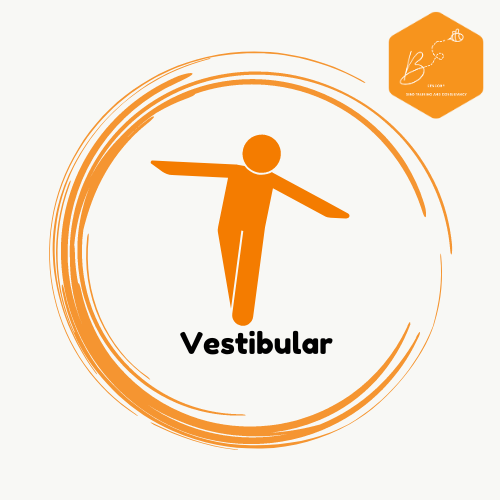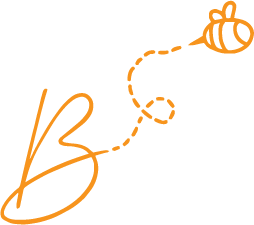Signs and Symptoms of Vestibular Difficulties

Signs and Symptoms
It is essential for professionals and caregivers to be able to identify when somebody is having visual processing difficulties. As well as sensory profiling people to identify their sensory difficulties, being able to recognise the signs of sensory needs is vital for effective management.
The vestibular sense, which is responsible for balance and spatial orientation, plays a crucial role in our daily activities, including maintaining posture, coordinating movements, and navigating our surroundings.
Too Little Information
When the vestibular sense is weakened or impaired, it can manifest in various signs and symptoms:
- Balance Issues: Individuals with a weakened vestibular sense may experience difficulties maintaining balance, particularly when standing or walking. They may appear unsteady on their feet, stumble frequently, or have a tendency to lean or sway while standing.
- Dizziness or Vertigo: Dizziness or a sensation of spinning (vertigo) is a common symptom of vestibular dysfunction. Individuals may feel lightheaded, disoriented, or as if the room is spinning around them, especially with sudden head movements.
- Motion Sickness: Those with a weakened vestibular sense may be more susceptible to motion sickness, particularly when traveling in cars, boats, or airplanes. They may experience nausea, vomiting, sweating, or headaches in response to motion stimuli.
- Difficulty with Spatial Awareness: A weakened vestibular sense can affect spatial perception and awareness of one's position in space. Individuals may have difficulty judging distances, navigating crowded or complex environments, or coordinating movements in relation to objects or people around them.
- Poor Postural Control: Individuals may exhibit poor postural control or alignment due to vestibular dysfunction. They may slouch, stoop, or have difficulty maintaining an upright posture, especially when sitting or standing for extended periods.
- Gait Abnormalities: Changes in walking pattern or gait abnormalities are common in individuals with vestibular impairments. They may walk with an uneven or unsteady gait, take shorter steps, or exhibit an irregular rhythm while walking.
- Sensitivity to Visual Motion: Some individuals may experience sensitivity to visual motion, such as difficulty focusing on moving objects or discomfort when watching fast-paced visual stimuli (e.g., scrolling text, fast-moving scenes in movies).
- Visual Disturbances: Vestibular dysfunction can also impact visual function, leading to symptoms such as blurred vision, double vision (diplopia), or difficulty maintaining visual focus, especially during head movements.
- Fatigue and Discomfort: Individuals with a weakened vestibular sense may experience fatigue, discomfort, or a sense of unease, particularly after prolonged exposure to sensory stimuli or activities requiring balance and coordination.
- Anxiety or Avoidance Behaviors: Chronic vestibular dysfunction can lead to feelings of anxiety or apprehension, especially in situations that exacerbate symptoms (e.g., heights, fast-moving vehicles). Individuals may develop avoidance behaviors to cope with situations perceived as threatening or overwhelming.
It's important for individuals experiencing symptoms of vestibular dysfunction to seek evaluation and treatment from healthcare professionals, such as otolaryngologists (ear, nose, and throat specialists) or vestibular therapists. Treatment may involve vestibular rehabilitation exercises, medication, lifestyle modifications, or other interventions aimed at improving balance and reducing symptoms.
Too Much Information
While an underactive vestibular sense can cause difficulties with balance and spatial orientation, an overactive vestibular sense can also lead to various signs and symptoms. Here are some signs of an overactive vestibular sense:
- Hyperresponsiveness to Motion: Individuals with an overactive vestibular sense may be hypersensitive to motion stimuli, such as movements of the head or body, changes in altitude, or acceleration and deceleration. Even minor movements or changes in position may trigger exaggerated sensations of dizziness, vertigo, or disorientation.
- Motion Sickness: Similar to those with a weakened vestibular sense, individuals with an overactive vestibular system may experience motion sickness more easily. They may feel nauseous, dizzy, or unwell when exposed to motion, particularly during activities such as traveling in vehicles or riding on amusement park rides.
- Exaggerated Response to Visual Motion: Visual stimuli that involve motion, such as scrolling text, fast-moving objects, or rapid changes in scenery, may provoke discomfort or dizziness in individuals with an overactive vestibular sense. They may have difficulty processing or integrating visual motion cues, leading to feelings of disorientation or visual disturbances.
- Balance Challenges: Despite having a heightened vestibular response, individuals with an overactive vestibular sense may still experience difficulties with balance. They may exhibit exaggerated postural adjustments or overcompensate for perceived changes in equilibrium, leading to unsteady or erratic movements.
- Increased Sensitivity to Changes in Altitude: Changes in altitude, such as ascending or descending stairs, riding elevators, or flying in airplanes, can provoke heightened sensations of dizziness or vertigo in individuals with an overactive vestibular sense. They may feel lightheaded or disoriented when transitioning between different levels or heights.
- Discomfort in Crowded or Confined Spaces: Some individuals may feel overwhelmed or claustrophobic in crowded or confined spaces due to the sensory overload caused by heightened vestibular sensations. They may experience feelings of anxiety, agitation, or discomfort when surrounded by a large number of people or in enclosed environments.
- Difficulty with Rapid Head Movements: Quick or abrupt movements of the head, such as turning quickly or looking up or down rapidly, may trigger intense sensations of dizziness or vertigo in individuals with an overactive vestibular sense. They may need to move more slowly or cautiously to minimize symptoms.
- Sensory Avoidance Behaviors: Individuals with an overactive vestibular sense may develop avoidance behaviors to minimize exposure to sensory triggers that exacerbate symptoms. They may avoid certain activities, environments, or movements that provoke dizziness or discomfort, leading to limitations in daily functioning or participation in activities.
- Fatigue and Anxiety: Coping with constant sensations of dizziness or vertigo can be exhausting and emotionally draining for individuals with an overactive vestibular sense. They may experience fatigue, anxiety, or stress as a result of ongoing sensory challenges and may struggle to cope with everyday tasks and responsibilities.
- Impact on Quality of Life: Severe or persistent symptoms of vestibular overactivity can significantly impact an individual's quality of life, affecting their ability to work, socialize, or engage in recreational activities. It's essential for individuals experiencing these symptoms to seek evaluation and treatment from healthcare professionals, such as otolaryngologists or vestibular therapists, to address underlying vestibular disorders and improve symptoms.
